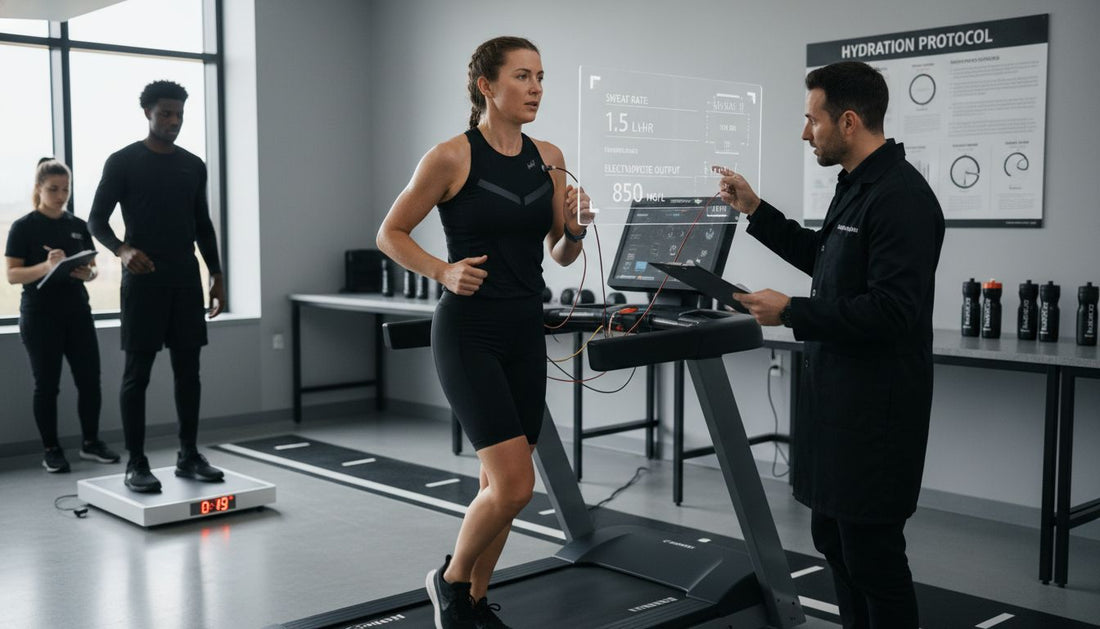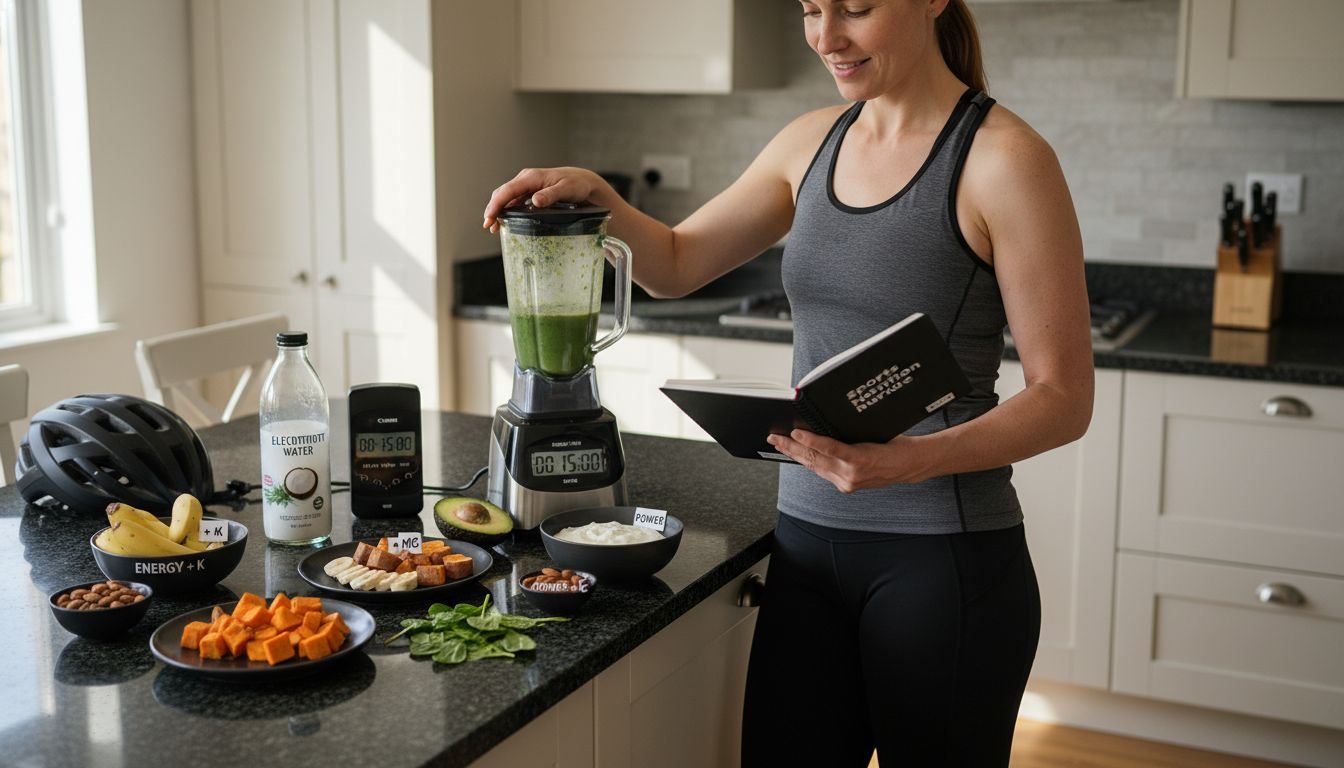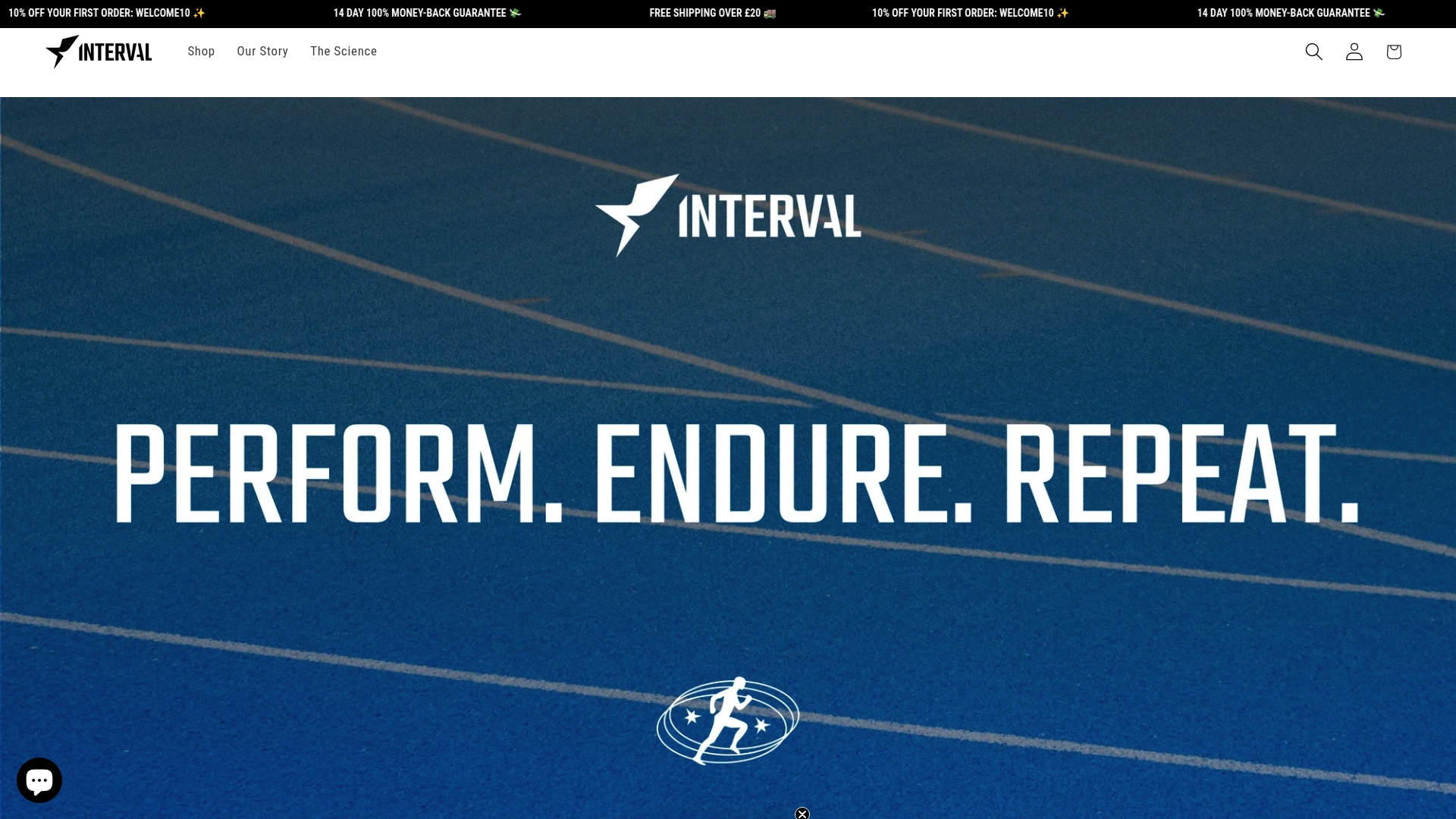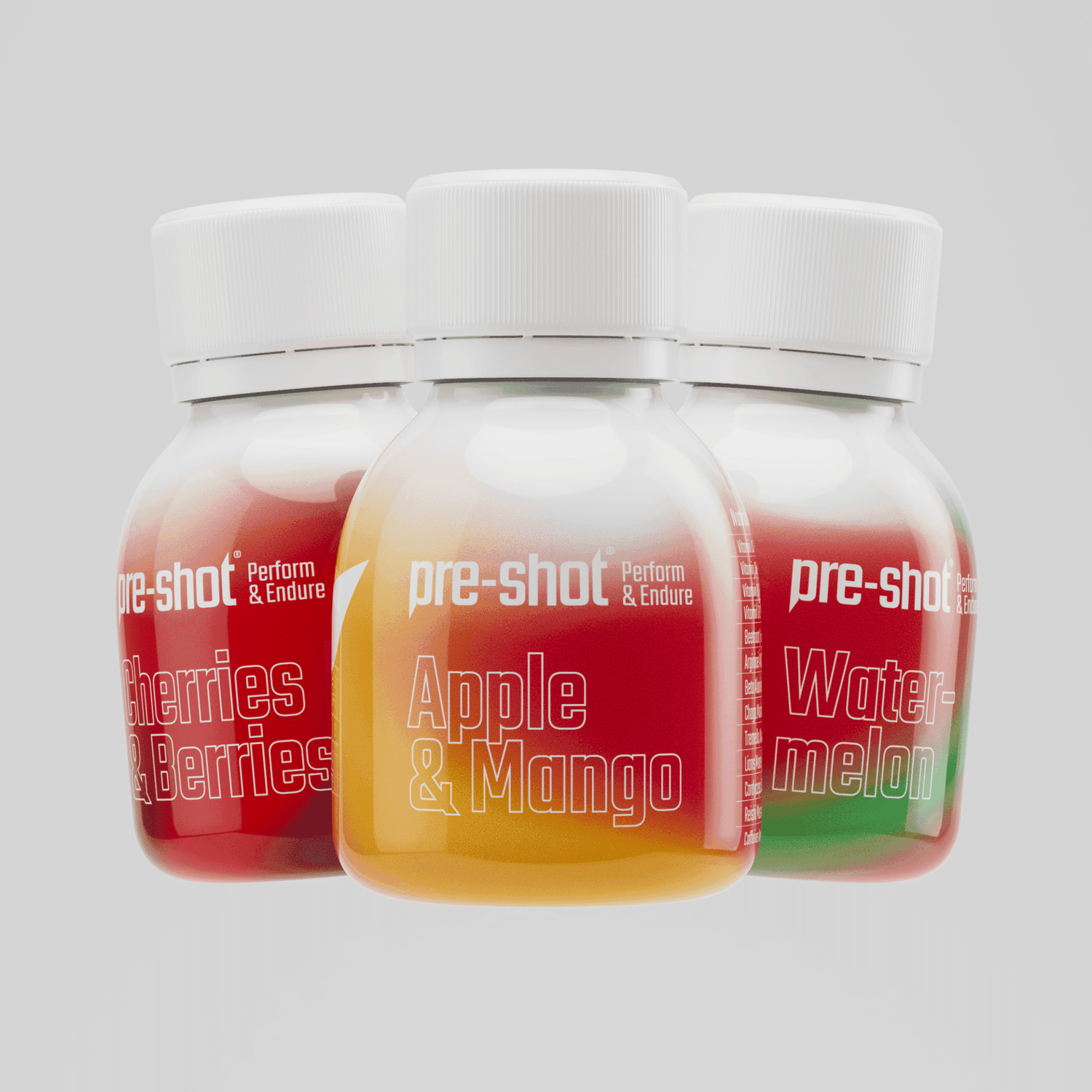
Master Electrolyte Use for Endurance in Sports
Did you know that athletes can lose up to 2 quarts of fluid every hour during intense exercise? Maintaining proper electrolyte balance is vital for anyone pushing their limits in endurance sports. Without the right approach, dehydration and fatigue can quickly derail your performance. By learning how to identify your unique electrolyte needs and use the best natural sources, you can power through even the toughest training sessions and see measurable improvements in your results.
Table of Contents
- Step 1: Assess Your Electrolyte Needs For Endurance
- Step 2: Select Natural Electrolyte Sources Pre-Workout
- Step 3: Incorporate Electrolytes Into Your Training Routine
- Step 4: Monitor Hydration And Electrolyte Balance During Sessions
- Step 5: Evaluate Endurance Performance With Optimized Electrolytes
Quick Summary
| Key Point | Explanation |
|---|---|
| 1. Assess your unique electrolyte needs | Track your sweat rate to determine individual hydration requirements and prevent imbalances. |
| 2. Incorporate natural electrolytes pre-workout | Consume whole foods like bananas and coconut water 60-90 minutes before training for optimal performance. |
| 3. Monitor hydration during training | Check urine color and body weight to avoid dehydration and ensure peak athletic performance. |
| 4. Implement a structured electrolyte intake plan | Consume electrolytes pre, during, and post workouts for better performance and recovery. |
| 5. Evaluate performance with your electrolyte strategy | Track performance metrics to analyze how different electrolyte concentrations affect endurance. |
Step 1: Assess your electrolyte needs for endurance
Understanding your body’s unique electrolyte requirements is crucial for maintaining peak performance during endurance sports. This assessment will help you prevent dehydration and optimize your athletic potential.
According to Johns Hopkins Medicine, athletes can lose up to 2 quarts of fluid per hour during intense activity. This significant fluid loss means tracking your personal electrolyte needs becomes critical for sustained performance.
Start by tracking your sweat rate and sodium loss during training. You can do this by weighing yourself before and after exercise to calculate fluid deficit. For precise measurements, consider a professional sweat test that analyses your individual electrolyte composition.
Key Assessment Factors
- Body weight and composition
- Training intensity
- Environmental conditions
- Duration of athletic activity
- Personal metabolic rate
Pay attention to your body’s signals. Symptoms like muscle cramps, fatigue, headaches and decreased performance can indicate electrolyte imbalances. These warning signs suggest you need a more targeted hydration strategy.
Learn more about balanced electrolyte strategies in our comprehensive electrolyte guide for athletes.
Remember that electrolyte needs vary widely between individuals. What works for another athlete might not work perfectly for you. Consistent monitoring and personalised adjustment are key to finding your optimal hydration approach.
Step 2: Select natural electrolyte sources pre-workout
Preparing your body with the right natural electrolyte sources can significantly enhance your pre-workout performance and prevent potential muscle fatigue. Understanding which foods naturally support your electrolyte needs will give you a competitive edge.
According to Johns Hopkins Medicine, electrolytes including salt, potassium, phosphate, calcium, and magnesium are essential for muscle and organ function. This means your pre-workout nutrition strategy should focus on whole food sources that provide these critical minerals.
Bananas and sweet potatoes are powerhouse options. Research shows consuming foods rich in potassium before training can help prevent muscle weakness and cramps during intense sessions. These natural sources are not only nutrient dense but also easily digestible.
Top natural electrolyte food sources include:
Here’s a summary of popular natural electrolyte sources and their key mineral content:
| Food Source | Main Electrolytes | Additional Benefits |
|---|---|---|
| Coconut water | Potassium, Sodium | Hydrating, low calorie |
| Bananas | Potassium, Magnesium | Quick energy, easy to digest |
| Sweet potatoes | Potassium, Calcium | Fibre, slow-release carbs |
| Spinach | Magnesium, Potassium | Iron, antioxidants |
| Avocados | Potassium, Magnesium | Healthy fats, fibre |
| Almonds | Magnesium, Calcium | Protein, vitamin E |
| Yogurt | Calcium, Potassium | Probiotics, protein |
- Coconut water
- Bananas
- Sweet potatoes
- Spinach
- Avocados
- Almonds
- Yogurt
Pro tip: Aim to consume these foods approximately 60 to 90 minutes before your workout to allow proper digestion and mineral absorption. This timing helps ensure your body has sufficient electrolytes available during performance.
For athletes seeking a comprehensive pre-workout approach, check out our natural pre-workout routine for intense performance.
Remember that individual nutritional needs vary. Experiment with different natural sources to discover what works best for your body and training intensity.

Step 3: Incorporate electrolytes into your training routine
Successfully integrating electrolytes into your training routine requires strategic planning and consistent implementation. Your goal is to optimise hydration and performance through targeted electrolyte consumption during different training phases.
Research from the University of Edinburgh demonstrates that ingesting a 6% carbohydrate-electrolyte solution during intermittent high-intensity exercise can significantly improve endurance capacity. This means timing and concentration matter more than simply drinking fluids.
Develop a structured electrolyte strategy with these key implementation approaches:
- Pre-workout: Consume natural electrolyte sources 60-90 minutes before training
- During workout: Sip on electrolyte drinks every 20-30 minutes
- Post-workout: Replenish with balanced electrolyte rich foods and beverages
Pay attention to your body’s specific needs. Some athletes require more electrolyte intake during longer or more intense training sessions. Concentration levels can dramatically impact your performance and recovery.
For athletes seeking a comprehensive approach to performance hydration, explore our intra-workout supplement guide to understand advanced hydration strategies.
Remember that electrolyte needs are highly individual. What works perfectly for one athlete might require adjustment for another. Consistent monitoring and personalised adaptation are key to finding your optimal hydration approach.
Step 4: Monitor hydration and electrolyte balance during sessions
Tracking your hydration and electrolyte levels during training is crucial for maintaining peak performance and preventing potential health risks. Understanding how to effectively monitor these vital metrics will help you optimise your athletic potential.
According to Johns Hopkins Medicine, dehydration can significantly impact athletic performance, endurance, breathing, and mood. This means staying vigilant about your body’s hydration status is more than just a recommendation it is essential for your overall athletic success.
Use these practical monitoring strategies during your training sessions:
- Check urine colour regularly (pale yellow indicates good hydration)
- Track bodyweight before and after exercise
- Note any sudden performance drops or unusual fatigue
- Monitor your sweat rate and sodium loss
- Use perceived exertion as an additional hydration indicator
Research from Liverpool John Moores University highlights the importance of monitoring hydration during intense events. Your physiological functioning and mental decision making can be dramatically affected by subtle changes in electrolyte balance.
Pro tip: Weigh yourself before and after training. A weight loss of more than 2% indicates significant fluid loss and potential performance degradation.
For athletes seeking advanced hydration solutions, explore our performance hydration options for fatigue reduction.
Remember that hydration is a dynamic process. Your electrolyte needs will change with training intensity, environmental conditions, and individual physiology. Stay adaptable and attentive to your body’s signals.
Step 5: Evaluate endurance performance with optimized electrolytes
Understanding how electrolyte optimization impacts your athletic performance requires systematic tracking and thoughtful analysis. Your goal is to transform raw data into actionable insights that enhance your endurance capabilities.
Research from the University of Edinburgh reveals that ingesting a 6% carbohydrate-electrolyte solution during high-intensity exercise can significantly improve performance and endurance capacity. This means your evaluation process should go beyond simple measurements.
Implement these comprehensive performance evaluation strategies:
- Track workout duration and intensity
- Record subjective energy levels
- Measure recovery time between training sessions
- Compare performance metrics before and after electrolyte optimization
- Note any changes in muscle fatigue and mental clarity
Pay close attention to how different electrolyte concentrations affect your overall performance. The research indicates that beverage composition can dramatically influence intermittent endurance and sprint performance.
Pro tip: Create a detailed training journal documenting electrolyte intake, performance metrics, and how your body responds. This will help you identify your unique metabolic patterns.
For athletes looking to dive deeper into performance optimization, check out our expert pre-workout supplement comparison.
Remember that performance evaluation is an ongoing process. Your body will adapt and change, so remain flexible and continue experimenting with your electrolyte strategy.
Elevate Your Endurance with Expert Electrolyte Support
Mastering your electrolyte balance is essential to overcome fatigue, muscle cramps and performance drops during high intensity sports. The article highlights how personalised hydration strategies and natural mineral sources can transform your training outcomes. Don’t let hydration gaps hold you back when you can optimise your recovery and energy with targeted electrolyte supplementation.
Explore our carefully crafted Electrolyte collection designed specifically for endurance athletes seeking natural, effective hydration.

Take control of your performance today and experience how balanced electrolytes can boost your stamina and mental clarity. Visit Interval supplements and fuel your next workout with nature-powered support tailored for intense sports.
Also, consider enhancing your routine with our specialised Pre-workout range for a complete approach to peak athletic output.
Frequently Asked Questions
How can I assess my unique electrolyte needs for endurance sports?
To assess your electrolyte needs, track your sweat rate by weighing yourself before and after exercise. Calculate your fluid loss, and consider professional sweat tests for detailed electrolyte composition analysis.
What are the best natural food sources of electrolytes to consume before a workout?
Natural food sources rich in electrolytes include bananas, sweet potatoes, and coconut water. Aim to consume these foods 60 to 90 minutes before your workout for optimal digestion and absorption.
How often should I hydrate with electrolytes during endurance training?
It’s recommended to sip on electrolyte drinks every 20 to 30 minutes during your workout. This regular intake can help maintain performance and prevent dehydration, especially during high-intensity sessions.
What signs indicate I may have an electrolyte imbalance during training?
Symptoms of electrolyte imbalance can include muscle cramps, unusual fatigue, headaches, and decreased performance. If you experience these signs, adjust your hydration strategy to include more electrolytes.
How can I monitor my hydration level effectively during training sessions?
Monitor your hydration by checking urine color (aim for pale yellow) and tracking weight before and after workouts. A weight loss of more than 2% indicates significant fluid loss, suggesting you need to increase your electrolyte intake.
How do I evaluate my endurance performance after optimizing my electrolyte intake?
To evaluate your performance, track workout duration and intensity, record energy levels, and measure recovery times. Look for improvements in fatigue and mental clarity by comparing metrics before and after adjusting your electrolyte strategy.

